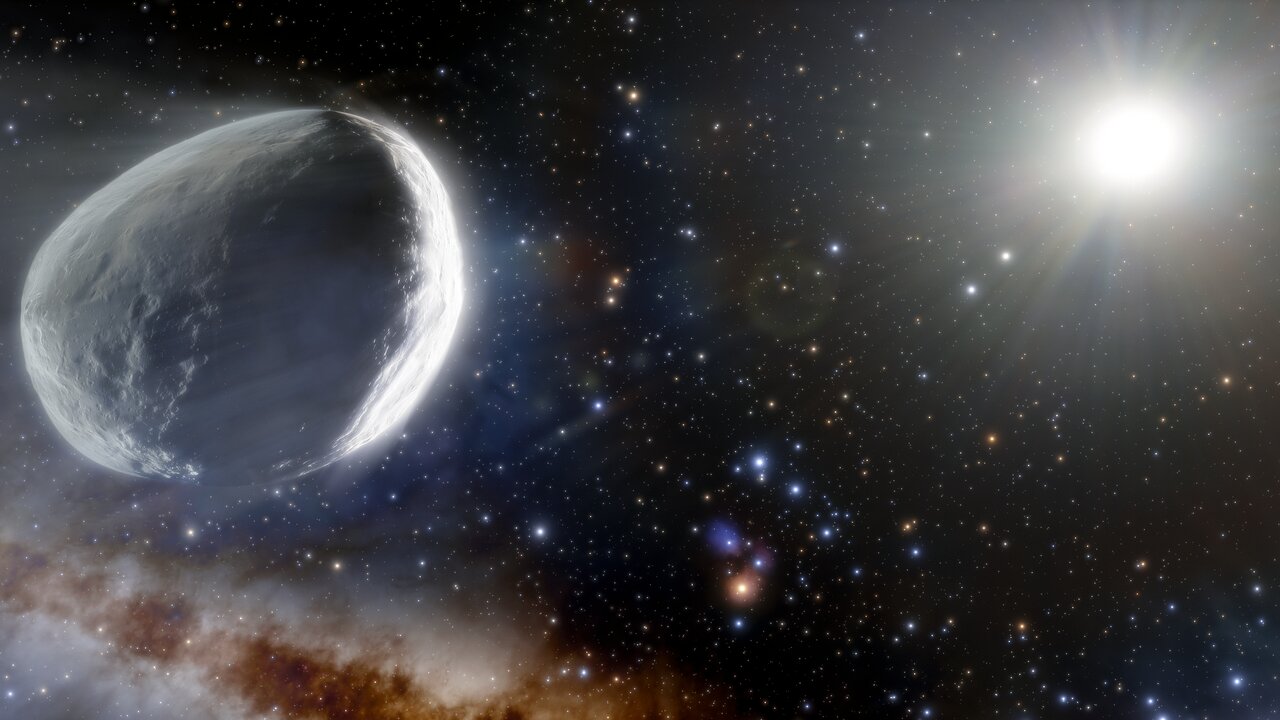Bernardelli-Bernstein confirmed to be the largest Oort-cloud comet in the Solar System
The Institute of Astrophysics of Andalusia (IAA-CSIC) participates in the study with the ALMA radiotelescope (Chile) of comet C/2014 UN271 Bernardinelli-Bernstein, which determined its size and albedo, or surface reflectivity. With 137 kilometres, it is the largest known comet, and perhaps one of the most pristine
In October 2014, a new object was found around the Sun: located at a similar distance to Neptune, its size was estimated to be around 100 kilometres and it was classified as a minor planet. However, new observations of the object, called 2014 UN271 (Bernardinelli-Bernstein), showed in 2021 a coma, the typical envelope of gas and dust that surrounds the nucleus of comets. No comet had ever been detected at such a great distance from the Sun, and its size made it one of the largest in the family. A study, led by the Paris Observatory with the participation of the Institute of Astrophysics of Andalusia (IAA-CSIC), now confirms that this is the largest comet in the Solar System.
“Observations with the ALMA radiotelescope (Chile) have made it possible to obtain its size, which amounts to some 137 kilometres", says Pablo Santos-Sanz, a researcher at the Institute of Astrophysics of Andalusia (IAA-CSIC) who participates in the study. “This makes this object the largest comet discovered to date, with a diameter almost twice that of comet Hale-Bopp, and only surpassed by the centaur 95P/Chiron, an object that shows characteristics common to asteroids and comets”.

The orbit of comet 2014 UN271 (Bernardinelli-Bernstein) places its origin in the Oort cloud, a spherical cloud that envelops the Solar System and is believed to be formed by the remains of the nebula that gave rise to the Sun and planets four and a half billion years ago (estimates suggest that it could extend from 0.03 to 3.16 light-years away and contain billions of comets).
But this comet is not only remarkable for its size. Comets are small solid icy bodies that acquire their characteristic appearance when they approach the Sun, the ices sublimate and the coma and tail emerge. This, known as cometary activity, shows an increasing evolution as they approach the Sun and does not usually occur at long distances. However, the data suggest that comet Bernardinelli-Bernstein was already active before its detection in 2014, at a distance of about 35 AUs (an astronomical unit, or AU, is the average distance between the Earth and the Sun): that is, it could have started to develop its coma five AUs beyond Neptune, at the icy edges of the Solar System.
The comet will not reach the inner regions of the Solar System. Its closest approach to the Earth will be in 2031, when it will be eleven astronomical units away from the Sun (it will not, therefore, cross the orbit of Saturn). "Thus, just as comet Hale-Bopp is the archetype of a comet with an orbit close to the Sun, Bernardelli-Bernstein would be the archetype of distant comets, whose activity is driven by super-volatile ices", says Pablo Santos-Sanz (IAA-CSIC).
Furthermore, the study of the orbit points to a past approach to the Sun, in which the comet reached a distance of between 17 and 21 astronomical units. Thus, this object has never been closer than this distance since its ejection from the Oort cloud, possibly making it one of the most pristine comets ever observed.
Finally, the work has allowed the albedo, or surface reflectivity, of Bernardinelli-Bernstein to be determined. "The surface of the nucleus of this giant comet has similar characteristics to the surfaces of other cometary nuclei, with a very low reflectivity, of the order of 5.3%. This albedo indicates that its surface is very dark, only slightly more reflective than that of charcoal –says Pablo Santos-Sanz (IAA-CSIC) –. It will be very interesting to study whether its albedo changes after closest approach to the Sun, as it could gain brightness as happened with the nucleus of comet Hale-Bopp”.
Lellouch et al. Size and albedo of comet C/2014 UN271(Bernardinelli-Bernstein), Astronomy & Astrophysics, 2022. https://doi.org/10.1051/0004-6361/202243090
Instituto de Astrofísica de Andalucía (IAA-CSIC)
Unidad de Divulgación y Comunicación
Silbia López de Lacalle - sll[arroba]iaa.es - 958230676
https://www.iaa.csic.es
https://divulgacion.iaa.csic.es

